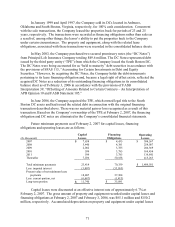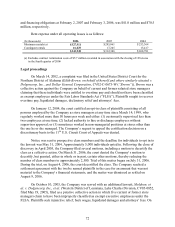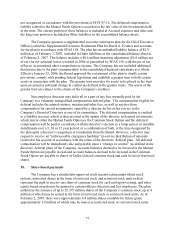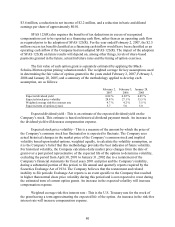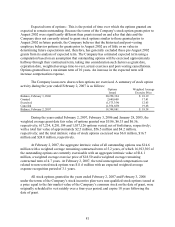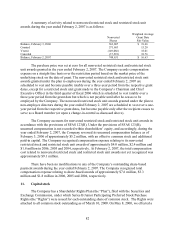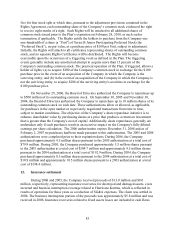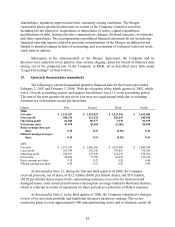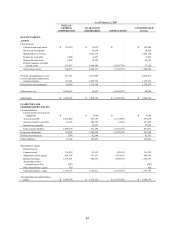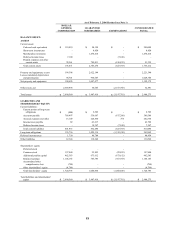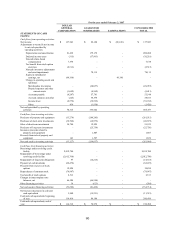Dollar General 2006 Annual Report Download - page 82
Download and view the complete annual report
Please find page 82 of the 2006 Dollar General annual report below. You can navigate through the pages in the report by either clicking on the pages listed below, or by using the keyword search tool below to find specific information within the annual report.
$3.6 million, a reduction in net income of $2.2 million, and a reduction in basic and diluted
earnings per share of approximately $0.01.
SFAS 123(R) also requires the benefits of tax deductions in excess of recognized
compensation cost to be reported as a financing cash flow, rather than as an operating cash flow
as required prior to the adoption of SFAS 123(R). For the year ended February 2, 2007, the $2.5
million excess tax benefit classified as a financing cash inflow would have been classified as an
operating cash inflow if the Company had not adopted SFAS 123(R). The impact of the adoption
of SFAS 123(R) on future results will depend on, among other things, levels of share-based
payments granted in the future, actual forfeiture rates and the timing of option exercises.
The fair value of each option grant is separately estimated by applying the Black-
Scholes-Merton option pricing valuation model. The weighted average for key assumptions used
in determining the fair value of options granted in the years ended February 2, 2007, February 3,
2006 and January 28, 2005, and a summary of the methodology applied to develop each
assumption, are as follows:
February 2,
2007
February 3,
2006
January 28,
2005
Expected dividend yield 0.82 % 0.85 % 0.85 %
Expected stock price volatility 28.8 % 27.1 % 35.5 %
Weighted average risk-free interest rate 4.7 % 4.2 % 3.5 %
Expected term of options (years) 5.7 5.0 5.0
Expected dividend yield - This is an estimate of the expected dividend yield on the
Company’ s stock. This estimate is based on historical dividend payment trends. An increase in
the dividend yield will decrease compensation expense.
Expected stock price volatility - This is a measure of the amount by which the price of
the Company’ s common stock has fluctuated or is expected to fluctuate. The Company uses
actual historical changes in the market price of the Company’ s common stock and implied
volatility based upon traded options, weighted equally, to calculate the volatility assumption, as
it is the Company’ s belief that this methodology provides the best indicator of future volatility.
For historical volatility, the Company calculates daily market price changes from the date of
grant over a past period representative of the expected life of the options to determine volatility,
excluding the period from April 30, 2001 to January 31, 2002 due to a restatement of the
Company’ s financial statements for fiscal years 2001 and prior and the Company’ s inability,
during a substantial portion of this period, to file annual and quarterly reports required by the
Securities Exchange Act of 1934. The Company believes that the restatement and related
inability to file periodic Exchange Act reports is an event specific to the Company that resulted
in higher than normal share price volatility during this period and is not expected to recur during
the estimated term of current option grants. An increase in the expected volatility will increase
compensation expense.
Weighted average risk-free interest rate - This is the U.S. Treasury rate for the week of
the grant having a term approximating the expected life of the option. An increase in the risk-free
interest rate will increase compensation expense.
80



